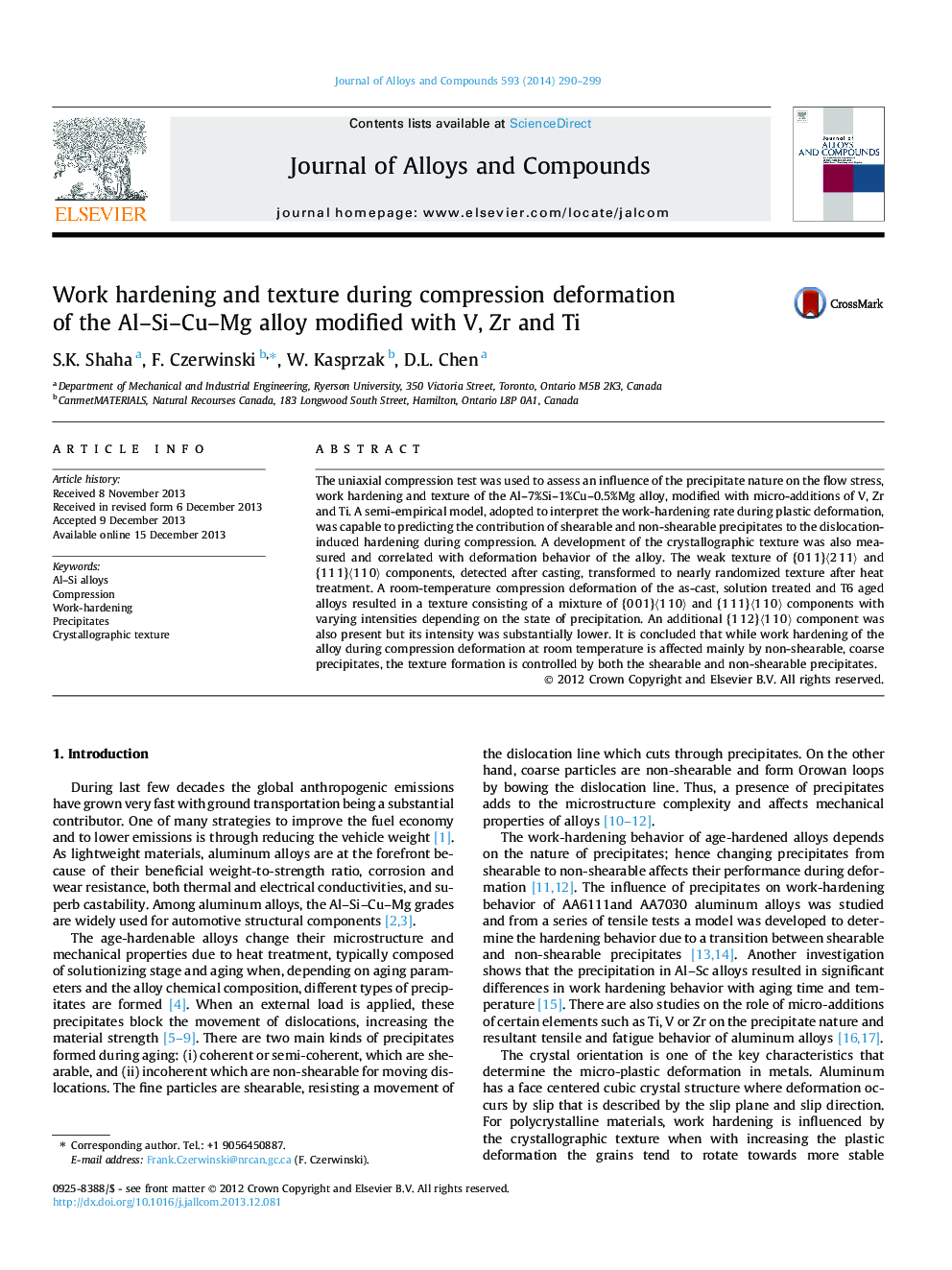| Article ID | Journal | Published Year | Pages | File Type |
|---|---|---|---|---|
| 1611994 | Journal of Alloys and Compounds | 2014 | 10 Pages |
•Al-Si-Cu-Mg cast alloy with Zr, V, and Ti was investigated under tension and compression.•Load change from tension to compression caused reduction in parabolic strain hardening.•Dislocation slip distance in compression was twice of that in tension.•Silicon particles experienced fracturing and rotation depending on deformation mode.•Rotation of hard silicon particles facilitated their cracking during deformation.
The uniaxial compression test was used to assess an influence of the precipitate nature on the flow stress, work hardening and texture of the Al–7%Si–1%Cu–0.5%Mg alloy, modified with micro-additions of V, Zr and Ti. A semi-empirical model, adopted to interpret the work-hardening rate during plastic deformation, was capable to predicting the contribution of shearable and non-shearable precipitates to the dislocation-induced hardening during compression. A development of the crystallographic texture was also measured and correlated with deformation behavior of the alloy. The weak texture of {0 1 1}〈2 1 1〉 and {1 1 1}〈1 1 0〉 components, detected after casting, transformed to nearly randomized texture after heat treatment. A room-temperature compression deformation of the as-cast, solution treated and T6 aged alloys resulted in a texture consisting of a mixture of {0 0 1}〈1 1 0〉 and {1 1 1}〈1 1 0〉 components with varying intensities depending on the state of precipitation. An additional {1 1 2}〈1 1 0〉 component was also present but its intensity was substantially lower. It is concluded that while work hardening of the alloy during compression deformation at room temperature is affected mainly by non-shearable, coarse precipitates, the texture formation is controlled by both the shearable and non-shearable precipitates.
